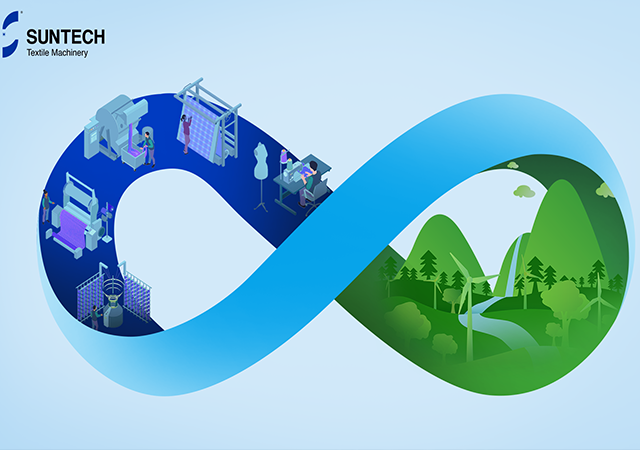As we celebrate World Earth Day on April 22, 2024, global attention is drawn to the ways in which we can preserve and protect our planet. The textile industry, known as one of the largest polluters and consumers of water and resources, stands at a crucial juncture. It has the unique opportunity to pivot towards more sustainable practices, thereby playing a significant role in environmental conservation. This year, the focus is on how this sector can transform its practices to reduce its ecological footprint and contribute positively to the earth’s future.
Reducing Water Consumption
The production of textiles, particularly cotton, is notoriously water-intensive. To illustrate, it takes about 2,700 liters of water to produce the cotton needed for a single t-shirt. This is equivalent to what an average person would drink over 900 days. Companies can invest in water-efficient technologies such as drip irrigation and dry dyeing techniques to drastically cut down water usage. Additionally, recycling wastewater can be a game-changer for reducing water consumption in the textile industry.
Moving Towards Sustainable Materials
Synthetic fibers like polyester, which are derived from fossil fuels, dominate clothing manufacture. These materials are not only resource-intensive to produce but also contribute to microplastic pollution in our oceans. A shift towards natural, organic, and regenerative fibers like organic cotton, hemp, and linen can significantly lessen environmental impact. Moreover, innovative materials such as Piñatex (made from pineapple leaves) and Mylo (mushroom leather) offer exciting, sustainable alternatives that the textile industry could adopt widely.
Embracing Circular Economy Principles
The concept of a circular economy, where products are designed and optimized for a cycle of disassembly and reuse, is particularly relevant to the textile industry. This can be achieved through designing for longevity, encouraging recycling, and promoting repair and reuse of garments. Brands can also introduce take-back schemes, where consumers return used garments for recycling or refurbishing. Furthermore, companies should focus on upcycling waste products into new textiles, significantly reducing the need for virgin materials and minimizing waste.

Implementing Cleaner Production Techniques
To lessen environmental degradation, the textile industry must adopt cleaner and more efficient production methods. This includes using low-impact dyes, energy-efficient machinery, and reducing chemical use by switching to natural or less harmful alternatives. Employing renewable energy sources in production plants can also significantly reduce carbon emissions associated with manufacturing processes.
Transparency and Consumer Education
An informed consumer is an empowered consumer. Brands need to be transparent about their manufacturing processes and the lifecycle impacts of their products. This transparency can be facilitated through labeling and the integration of technology like blockchain for tracing the origins and environmental footprint of garments. Educating consumers about the impact of their choices and encouraging responsible consumption is crucial for driving demand for sustainable products.
Legislative Support and Collaboration
Governments can aid the textile industry's shift towards sustainability through regulations and incentives. Policies that encourage sustainable practices, tax breaks for green initiatives, and stricter pollution controls can create an environment where sustainable practices are the norm. Additionally, collaboration across the industry—from raw material suppliers to fashion retailers—is essential to foster innovation and scale sustainable practices.
On this World Earth Day, as we reflect on our role in shaping a sustainable future, the textile industry's move towards these sustainable practices is not just beneficial for the environment but is also a strategic economic move. Sustainable practices can lead to long-term cost savings, meet the growing consumer demand for ethical products, and help mitigate the risks associated with resource scarcity and environmental regulations.
By embracing these changes, the textile industry can turn its environmental liabilities into opportunities, paving the way for a future where fashion and sustainability are inseparably woven together.
At SUNTECH Textile Machinery, we acknowledge the profound influence of digitization and technology across diverse sectors. With an unwavering commitment to fostering innovation, we continuously strive to stay at the forefront of technological progress. By seamlessly incorporating advancements into our textile machinery, we ensure the delivery of unparalleled value and forward-thinking solutions that not only meet current demands but also anticipate future




